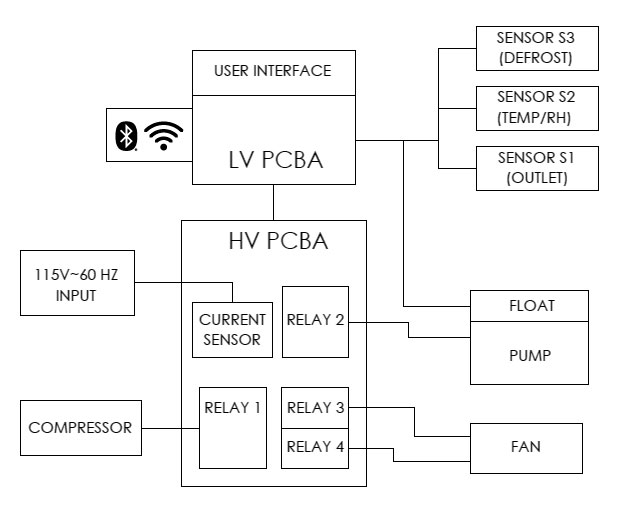|
<< Click to Display Table of Contents >> Service Technicians Only |
  
|
|
<< Click to Display Table of Contents >> Service Technicians Only |
  
|
FOR SERVICE TECHNICIANS ONLY
Required safety procedures for servicing dehumidifiers with R32 refrigerant:
•Survey the area to ensure there are no sources of ignition that may lead to risk of fire and that there are no open flames or other potential ignition sources for refrigerant detection, and that leak detection equipment set to a percentage of the LFL and is calibrated for the refrigerant used.
•Post “no smoking” signs.
•Display component inspection procedures before repair or maintenance to electrical components, including ensuring that capacitors are discharged, that there is bonding continuity, and that no electrical components or wiring are exposed.
•Disconnect the power supply before repair.
•Follow safety procedures for removal and evacuation of refrigerant, purging the circuit with inert gas, opening the circuit by cutting or brazing, and recovering charge into the correct recovery cylinders. If venting is not allowed by national codes, purging the system with oxygen-free nitrogen if the system is to be purged, venting the system to atmospheric pressure if oxygen-free nitrogen charge is used, and ensuring that the outlet for the vacuum pump is not close to any potential ignition sources.
Before decommissioning units containing R32 refrigerant, you must make sure:
•PPE is available and being used correctly and that the technician is completely familiar with the equipment.
•The recovery process is being supervised by a competent person.
•Electrical power is available before decommissioning and isolate the system electronically.
•Refrigerants can be recovered safely, taking an oil and refrigerant sample in case analysis is required prior to reuse of recovered refrigerant.
•Equipment is available for handling refrigerant cylinders if required. Make sure that recovery equipment and cylinders conform to the appropriate standards.
•Only appropriate cylinders (designated for R32 refrigerant and labeled as such) are used for recovery, and that the correct number of cylinders for holding the total charge are available.
•Cylinders are evacuated prior to use.
•Recovery equipment is working and instructions are available.
•Calibrated weighing scales are available, that hoses have leak free disconnect couplings and are in good condition.
•The recovery machine is working properly and any potential ignition sources are sealed.
•There’s not potential for mixing refrigerants in cylinders or recovery units.
•Compressors or compressor oils are properly evacuated if they are to be removed, and evacuating the compressor prior to returning the compressor to the suppliers if it is evacuated.
•Oil is drained out safely if it is to be drained out.
Decommissioning Process
•Pump down the refrigerant system if possible (otherwise making a manifold so that refrigerant can be removed from various parts), making sure that the cylinder is on the scales before recovering refrigerant.
•Operate the recovery machine in accordance with instructions, not filling cylinders to more than 80% liquid volume charge, not exceeding the max working pressure of the cylinders, and making sure that cylinders are filled correctly and removed from site after the process is completed.
•Do not charge recovered refrigerant into another system until it has been cleaned and checked.
•After completion, label the unit to show when it was decommissioned and emptied of refrigerant, that the label must be dated and signed, and ensuring that there are labels on the equipment stating that it contains flammable refrigerant.
(For Service Technicians Only)
